Toshiba Percept S Handleiding
Toshiba
Videorecorder
Percept S
Bekijk gratis de handleiding van Toshiba Percept S (2 pagina’s), behorend tot de categorie Videorecorder. Deze gids werd als nuttig beoordeeld door 59 mensen en kreeg gemiddeld 3.9 sterren uit 30 reviews. Heb je een vraag over Toshiba Percept S of wil je andere gebruikers van dit product iets vragen? Stel een vraag
Pagina 1/2

Default Login Credentials and Network Settings
Username Passwordadmin 1234
Client NIC IP Address Remote Communication PortSet to DHCP 80 (8888 used if 80 is blocked)
Camera NIC IP Address IP Address Reserved for PoE192.168.51.1
192.168.50.1 (Internal PoE)
192.168.50.2 (Internal NIC)
192.168.50.11-192.168.50.26 (PoE Ports)
1. Click the appropriate to your desired User.Company Account
2. Click and then click .User Management, User Groups
3. Click in the row of the desired .Edit User Group
4. Click the Recorders tab.
5. To add recorder access, click , select the appro-Add Recorder
priate recorders, and then click .Save
6. Click in the row of the recorder you want to remove.Remove
NOTE Users who are also assigned to another group with permission to
access the recorder removed form this group will still be able to
access the recorder.
Modifying Recorder Access
Managing User Permissions
To make User Management more efcient, permissions are man-
aged through User Groups rather than through individual users. User
Management can be performed locally on individual recorders or
performed centrally in the cloud through WS.
NOTE It is recommended that you perform all user management using
the Cloud.
Three default permission levels are available:
• User - basic Live view and Search functionality
• Super User - basic Live view and Search functionality, ability to
export and view video clips.
• Admin - all Live view, Search, and Export functionality, access to
recorder setup and group management.
Adding a User to a Group
1. Log in to your WS account using a web browser.
2. Click the appropriate for your desired user.Company Account
3. Click and then click .User Management, User Groups
4. In the row of your desired , click User Group Edit.
5. Click , and then click .Users Add User
6. Select the user you want to add to the User Group, and then click
Save.
Removing a User from a Group
1. In the appropriate , click Company Account User Management,
and then click .User Groups
2. In the row of your desired User Group, click . Edit
3. Click , and then click in the row of the desired Users Remove
User Group.
1. Click the appropriate to your desired User.Company Account
2. Click , and then click .User Management User Groups
3. Click in the row of the desired Edit User Group.
4. Click one of the following and edit the desired permission:
• Web Services Permissions - These permissions pertain
to Video Archive, User Management, and Recorder per-
missions from the WS website.
• Recorder Permissions - All Live view, Search, and Setup
functions available through the Thin Client, Mobile, and
Command Station applications.
• Remote Client Permissions - These permissions pertain
to shared Command Station permission.
Modifying Group Level Permissions
SETTING UP YOUR RECORDER FOR THE FIRST TIME
1. Plug the supplied power cord into the recorder. Do NOT connect the
plug to a power source at this time.
2. Connect the network cable intended for remote connections to the Client
NIC.
3. Connect the supplied and using the USB ports.keyboard mouse
4. Connect a using the HDMI port.monitor
5. Connect the to PoE ports, or the external camera network.cameras
NOTE The Camera NIC is intended for use with a dedicated
camera network.
6. Connect the to a power source, and then turn the recorder power cord
ON.
7. Log in to the Server recorder using the default credentials:
adminUsername:
: 1234Password
8. Follow the to complete basic setup of your system. Setup Wizard
Quick Installation Guide
Cloud Managed Appliance
This guide will assist you with the initial setup of your cloud managed appliance and recording software. This guide includes hardware setup,
software setup, network conguration, and connecting your appliance to the Web Services Portal.
Copyright ©2016. All Rights Reserved. Information contained in this
document is subject to change without prior notice. This company does
its best to provide accurate information but cannot be held responsible for
typos or mistakes. 35137AB
1
Power
Supply
Adding a New User Group
1. Log in to your WS account using a web browser.
2. Click the appropriate to your desired User.Company Account
3. Click , and then click .User Management User Groups
4. Click .Add New User Group
5. Type a and for the and then Name Description User Group,
click .Save
*Use included VGA to DVI-I adapter
Adding Users to WS
1. Log in to your WS account from a web browser.
2. Click in the row of the you wish to Connect Company Account
add users to.
3. Click and then click .User Management , User Account
4. Click , and then enter the appropriate user infor-Add New Users
mation.
5. Click Add New User.
Creating a Company Account
1. Log in to your WS account from a web browser.
2. Enter your registered and .Username Password
3. Click .Add Company
4. Enter a , and then click Company Name Add Company Ac-
count.
Company accounts are created to segregate different customer
accounts, permissions, and recorders from one another. Company
accounts can only be created by a channel partner. Once created,
the channel partner can assign recorders to companies or create
accounts for end users.
IN
OUT
AUDIO
VGA RS- 232
POWER
1 3 5 7 9 11 13 15
2 4 6 8 10 12 14 16
Camera
Client
HD Out
PoE+
2
Client
NIC
3
Keyboard and
Mouse
4
HDMI, DVI-I*, or VGA
Monitor
5
PoE IP Camera
Connection
Alarm
I/O Block
6
On / Off
Switch
Audio In / Out
Camera
NIC
RS-232

1. Click , and then click Setup Cameras.
2. Select the desired camera, and then click the Live / Recording
tab.
3. Congure the settings as desired.
1. On your Server recorder, click and then click the Setup , Glob-
CAMERA MANAGEMENT
WEB SERVICES CONNECTION
WEB SERVICES
This is a cloud based management solution which allows you to admin-
ister all your users, recorders, and VMS installations from one central
location. To get the most out of your new web-managed recorder, we
strongly recommend connecting it to the Web Services portal.
Creating a Web Services Account
Connecting a Recorder to WS
In the previous section, you enabled Web Web Services Connection
Services on your Server recorder.
Now, you will need to add the recorder to the appropriate Company
Account.
1. Log in to your WS account.
2. Select the appropriate , and then click .Company Account Add
Users associated with this Company Account will now be able to re-
motely access the Server recorder.
NOTE Once you have enabled an recorder to connect with WS,
it will appear on your WS account as an unassigned recorder.
Assign the recorder to the appropriate Company Account.
Server software makes it easy to add and congure IP cameras. Re-
corders will automatically detect and add ONVIF IP cameras connect-
ed to the on-board PoE switch.
ADVANCED CAMERA MANAGEMENT
Cameras set to static IP addresses, third party cameras, and cameras
not supported by ONVIF may not be detected automatically. To cong-
ure cameras not automatically detected by Server software, follow the
steps below.
1. Click , and then click Setup Support Tools.
2. Click Launch Support Tools.
3. Click Network Camera Manager.
4. Note the discovered for the desired camera.IP address
5. Click to return to Server software.Exit
6. Follow the steps in the section, typing Adding Cameras Manually
the .Static IP Address
1. Click , and then click Setup Support Tools.
2. Click Launch Support Tools.
3. Click Network Camera Manager.
4. Select your desired cameras, and DHCP, and then click Apply.
5. Click to return to Server software.Exit
6. Follow the steps in the section to Adding Auto-Detected Cameras
add the camera.
Conguring Cameras with a Static IP Address (Linux
models only)
Conguring Cameras with DHCP (Linux models only)
Adding Third Party Cameras
Third party cameras may require installing a manufacturer camera
discovery tool on a separate PC. Once the camera discovery tool is
installed, follow the steps for adding a camera with a static IP address
or using DHCP as outlined above.
Adding Cameras Not Supported by ONVIF
You must add cameras that are not ONVIF-compliant using the RTSP
stream of the camera. Consult the manufacturer’s camera manual for
more detailed information regarding RTSP streams. When you know
the URL for the RTSP stream of your camera, follow the steps in the
Adding Cameras Manually section, selecting RTSP protocol.
To begin using WS, you will need to add individual companies to asso-
ciate with customers.
NOTE If you do not already have an WS account, contact a technical
support agent.
NOTE Continuous + Motion recording is the default setting for all cameras
upon connection to your recorder.
1. Click , and then click .Setup Health Monitoring
2. Select .Use Health Monitoring
3. Congure the settings as desired.
NOTE If you do not already have a Health Monitoring account, contact a
technical support agent.
HEALTH MONITORING CONNECTION
NOTE Third party cameras may need to be configured using a third party
program before being added to Server. Cameras that don’t
support ONVIF can be configured to record via RTSP streaming.
Server software automatically detects ONVIF Prole S compliant cam-
eras set to DHCP. Cameras not meeting these requirements must be
congured manually.
1. Click , and then click Setup Cameras.
2. Click .Add Cameras
3. For automatically detected cameras, select the camera(s) using
the check boxes, and then type the appropriate and Username
Password.
4. Click .Add
Adding Auto-Detected Cameras
NOTE The recorder will automatically detect and add most cameras
connected to the on-board PoE switch as long as the
cameras are set to DHCP.
1. Click , and then click Setup Cameras.
2. Select the desired camera, and then click the Live / Recording
tab.
3. Congure the settings as desired.
1. Click , and then click .Setup Cameras
2. Click .Add Cameras
3. For cameras not automatically detected, click Add Cameras
Manually.
4. Select the ONVIF or the RTSP protocol, and then type the appro-
priate , Title IP Address, , and . Username Password
5. Click . Add Cameras
Adding Cameras Manually
NOTE When using RTSP, specify the individual URL streams for your
cameras. For instructions regarding these streams, consult the
camera manual.
Conguring Recording Settings
For optimal motion detection, cameras should be congured with a
secondary stream of 720x576 or lower. Server software will still detect
motion using a higher resolution stream if a 720x576 or lower stream is
not available, but this will consume more system resources.
In some cases, advanced network settings may be applied to set up an
optimal local or remote connection. The following steps are optional.
Please contact a support technician if you are unsure of your video
network.
To optimize local connections, WS uses a feature called LAN Smart
Forward (LSF). This feature allows WS to detect if the machine using
the remote client software is on the same local network. WS then auto-
matically switches from a cloud relay connection to a direct connection.
This ensures the fastest connection between client and appliance.
The following conditions are required for LAN Smart Forwarding:
With direct connection, network trafc bypasses the WS cloud relay
service, allowing for optimal connection speeds. This conguration
requires additional steps, including router conguration, in order to
forward trafc to the appropriate appliance.
LAN Smart Forwarding
ADVANCED NETWORK SETUP
Direct Connection
To enable LAN Smart Forwarding:
1. Use a web browser to log in to your WS account, and then click on
your desired Company Account.
2. Click and then click in the row of the desired My Recorders, Edit
appliance.
3. Click the tab.Remote Network Settings
4. Set to On.LAN Smart Forwarding
NOTE If your appliance and client machines have different external IP
addresses, enter the IP range in which the client and appliance
reside.
NOTE Visit http://portforward.com/English/routers/port_forwarding/ for
instructions regarding router configuration for direct connection.
You must already have an WS account, and the appliance must be
connected to WS with LAN Smart Forwarding congured (see the
Web Services section for more information).
Both client and appliance use the same external IP address, or IP
addresses within an acceptable range.
The Client NIC port must be used for the Internet connection.
1. Access the used for Internet communication and forward router
TCP port 80 to the internal address of the appliance.
2. Use a web browser to log in to your WS account. Click My Re-
corders Edit , and then click in the row of your desired appliance.
3. Click , and then type the or Remote Network Settings static IP
DDNS entry Domain for the router in the IP Address or eld, and
80 in the Port eld.
4. Click . Save
•
•
•
Product specificaties
| Merk: | Toshiba |
| Categorie: | Videorecorder |
| Model: | Percept S |
| Kleur van het product: | Zwart |
| Breedte: | 438.1 mm |
| Diepte: | 342.9 mm |
| Hoogte: | 44.45 mm |
| LED-indicatoren: | Ja |
| Maximum resolutie: | 3840 x 2160 Pixels |
| Meegeleverde kabels: | AC |
| Maximale beeldsnelheid: | 30 fps |
| Resolutie bij opnamesnelheid: | 3840x2160@30fps |
| Inclusief AC-adapter: | Ja |
| Aantal USB 2.0-poorten: | 2 |
| Aantal Ethernet LAN (RJ-45)-poorten: | 16 |
| Vermogensverbruik (max): | 175 W |
| Audio-uitgang: | Lijn |
| Ethernet LAN, data-overdrachtsnelheden: | 100,1000 Mbit/s |
| Aantal poorten USB 3.2 Gen 1 (3.1 Gen 1) Type A: | 1 |
| Rack-montage: | Ja |
| Totale geïnstalleerde opslagcapaciteit: | 12000 GB |
| Snelle installatiehandleiding: | Nee |
| Lijningang: | Ja |
| HDD capaciteit: | - GB |
| Power over Ethernet (PoE): | Ja |
| Ondersteunde browser: | Chrome, Edge, Firefox, Safari, Internet Explorer |
| Maximum aantal HDD's per behuizing: | 2 |
| Maximale opslagcapaciteit: | 12 TB |
| VGA (D-Sub) uitgang ports: | 1 |
| Videoingangkanalen: | 16 kanalen |
| Alarmingangkanalen: | 4 |
| AC-ingangsspanning: | 100 - 240 V |
| AC-ingangsfrequentie: | 50 - 60 Hz |
| Ingebouwde optical-drive: | Nee |
| Backup-functie: | Ja |
| HDMI-uitgang: | Ja |
| Alarmuitgangkanalen: | 4 |
| Gegevensdoorvoersnelheid: | 120 Mbit/s |
Heb je hulp nodig?
Als je hulp nodig hebt met Toshiba Percept S stel dan hieronder een vraag en andere gebruikers zullen je antwoorden
Handleiding Videorecorder Toshiba

6 Mei 2023

18 April 2023

13 April 2023

12 April 2023

9 April 2023

8 April 2023

2 April 2023

26 Maart 2023

19 Maart 2023

19 Maart 2023
Handleiding Videorecorder
- UniView
- LG
- Motorola
- Kunft
- Sylvania
- Panasonic
- Evga
- Philips
- DirecTV
- Lorex
- Samsung
- Grandstream
- Acti
- Digital Watchdog
- Reolink
Nieuwste handleidingen voor Videorecorder
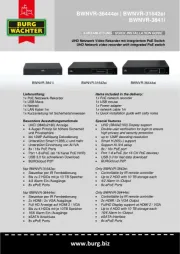
21 Juni 2025

21 Juni 2025
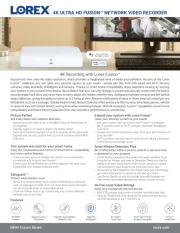
17 Juni 2025
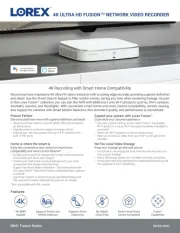
17 Juni 2025
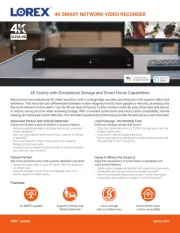
17 Juni 2025
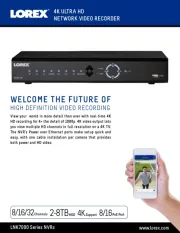
16 Juni 2025
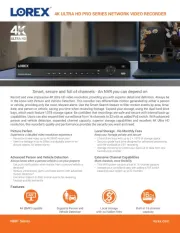
16 Juni 2025
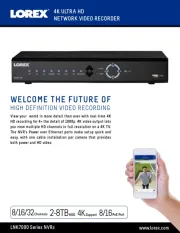
16 Juni 2025
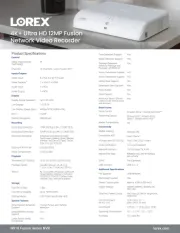
16 Juni 2025
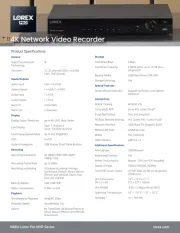
16 Juni 2025